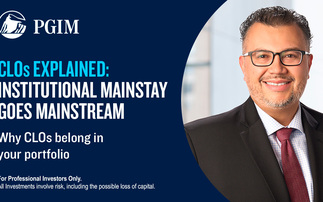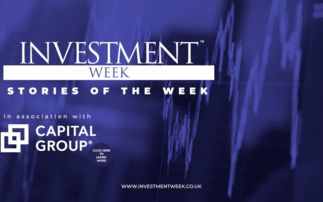Industry Voice: How to uncover innovative potential
When it comes to small-company investing, insights into the innovative capabilities of companies is crucial. Innovation can be a key long-term driver of returns. Understanding the unique attributes of smaller companies is essential to not only finding those with game-changing innovative ideas—but also those with the potential and business acumen to make their ideas work commercially over the long term.
We spend a great deal of time and resources looking for and researching companies we believe to be truly innovative—those offering something unique within their field or industry and, as such, have the potential to gain an edge on the competition. Innovation comes in many guises of course, but three broad classifications provide a basis for our research:
- New product innovation: This is a very broad category, including new drugs, new software or technology; it extends to new brands, new products or formats, as well as new business models and services.
- Disruptive innovation: Smaller companies set to successfully challenge incumbent businesses or the status quo.
- Sustaining innovation: It is crucial that young companies keep reinventing themselves to keep ahead of the competition. The truly great returns come from businesses that can do that.
We seek to uncover those companies that we believe can grow significantly in a durable fashion, maintaining or improving their profitability and returns over the long term.
Earlier this year, we conducted of our own study to identify how many smaller companies had demonstrated the super-compounding performance that we look for (defined as companies that have achieved a compound annual growth rate of at least 20% per annum over 10 years).1The result was illuminating. Only 1% of companies managed that feat over different periods. We found this to be an important insight and it has subsequently helped underpin our investment process. Finding these durable compounders is critical-and that's always the challenge.
Developing and harnessing the innovation is just part of the journey. Creating a business that can exploit that innovation is also vital.
Uncovering Innovative Potential
Discovering smaller companies with significant potential derived from innovative ideas and products demands a nuanced approach. Simply screening for innovation is not an option. Instead, uncovering ground breaking ideas with the potential to change the status quo and drive real growth demands a combination of curiosity, effort, determination and judgement from a well-resourced research team. Company visits are essential.
Initial public offerings (IPOs) represent a rich source of new ideas - and an opportunity to capture the innovative ideas of smaller companies early on. Substantial rewards can come from identifying quality businesses—the leaders of tomorrow—early.
Early Stage Investing - EVR Holdings
An example of a very early stage investment is EVR Holdings, a UK-listed business with a market capitalisation of about GBP 100 million. We believe their MelodyVR unit, which records concerts in virtual reality and hopes to sell the recordings via an app, has enormous potential if the company can successfully monetise this market. MelodyVR already commands a leading position, having recorded a substantial body of material and agreed revenue-sharing deals with major music companies; the product is also preinstalled on the Oculus Go VR headset, made by a company owned by Facebook.
However, smaller company research demands an extra layer of insight and consideration. The depth of fundamental research needed to make an assessment is the same as other stocks, but the information available can often be patchy. Comparisons with similar public companies can provide a good baseline of information, particularly as a guide to valuation multiples being assigned to competitors.
An assessment of the company's plans and projections for future growth is also critical because an IPO valuation depends heavily on the company's future growth projections. We can also assess a "good seller effect"—typically when an IPO is offered by the company founders or if the purpose is to raise growth capital. We have found that certain private equity firms are better than others. They have good and disclosed track records and are skilled investors. They can identify fundamentally attractive, long-term industries and they put in place strong corporate governance and more professional systems and structures. Management pedigree is not always easy to gauge, and this is where conducting due diligence and learning about the company's leadership team is critical.
As for the current IPO market, we are probably approaching the end of the cycle. There have been a significant number of IPOs, but a narrower set of companies is coming to market now. They are also lower quality and generally have higher valuations. Even so, we are still very selective about the IPOs we choose to participate in.
Making the Transition to Sustainable Growth
While finding innovative companies demands an added layer of research and insight, even more crucial is ascertaining which companies have the capacity to grasp the opportunity at hand and make it a long-term success. They may have great ideas, but often it takes longer to bring those ideas to market—to commercialise them—than originally planned. The hurdles to success are often high.
There are many reasons why such companies can struggle to make the transition: the ‘innovation' might not progress from idea to reality; the product can fail; new entrants might out-innovate; and incumbents may find ways to defend their businesses and profits.
Patient Investing - IQE
We have held a company called IQE for 8 years. The Wales-based company has a focus on compound semiconductors and makes the wafers used in the 3D-sensing camera in Apple's iPhone X. The compound semiconductor market has been an area of promise for a decade or more but until now the products have been used only in niche applications. The company's visionary leader transformed the business by making acquisitions to build the right set-up over that period. We identified several years ago what we believed was the significant growth potential for IQE of its wafer products and the field of compound semiconductors more generally, although only recently has this started to be recognised by the market as applications have begun to expand. We are confident that compound semiconductors are going to be a big driver of the semiconductor market, and we are starting to see that happening now.
Developing and harnessing the innovation is just part of the journey. Creating a business that can exploit that innovation is also vital. To capitalise on the growth potential, there must be investment in management, systems and capacity far in advance of the target date for bringing a product to market. That demands capable and judicious management to help the company make the transition from a start-up to a small company that grows over time. Not surprisingly, many find this transition complex.
Patience Rather Than Valuation Is Key
Valuation discipline is of great importance when choosing the stocks to make up a portfolio. Yet investing in early stage businesses demands having a perspective that looks beyond the valuation data. Figures that suggest a company is delivering 20x or 30x price-to-earnings for example, must be considered in the context of the longer time horizon needed for innovation to deliver growth and income. True innovation has an investment horizon beyond just one year, or even three years; it's a long-term proposition. For the patient investor with a fundamental belief in the management and the product, apparently expensive stocks now can potentially yield appreciable gains over time as the benefits of their innovations are realised.
The process of adding innovation-led smaller companies to a portfolio also demands a more considered approach. In our view, this means starting with small positions and building a well-diversified portfolio over time. Ongoing meetings with the management and further research subsequently seek further evidence of the potential of the innovation or that management is demonstrating an ability to take the business to the next level. This provides the information to help determine when to adjust those positions over time.
Capturing the Innovation Edge in Europe
So, how does Europe fare in comparison to the rest of the world? We believe the European small-cap universe presents a huge opportunity for uncovering innovative companies. Figures 1 illustrates that Europe spends a significant amount on research and development both absolutely and as a percentage of GDP.
Clearly, the US has done very well in innovation—consider the rise of the FAANGs2 for example. China and Japan also have a great track record. While Europe may not yet have produced the types of start-up companies that have turned into an Amazon or a Microsoft, the Continent has a long and deep culture of fostering innovation.
Many academic institutions feature prominently, and the EU has a strong legal framework that protects innovation. Europe is also home to some of the most innovative industries on the planet - the automotive industry is a standout example, while genomics, particle physics and renewable energy all have strong foundations.
Figure 1: Europe is staying in the innovation game
Gross Domestic Spend on Research & Development, as at 31 December 2016

Source: http://data.uis.unesco.org/, Science, Technology and Innovation, data for 2016.
Small, innovative companies can also be found in Europe in the health care, retailing, and industrials and business services sectors, not just technology. They are contributing to the process of disruption that is changing economic activity on many fronts not only in Europe but across the world.
Innovation is Everywhere - Rational
Innovative, well-managed smaller companies that can deliver strong durable growth over time are not confined solely to high technology industries. They can be found in traditional industries as well. Rational, a maker of industrial ovens based in Germany, broke the mould in 1976 with an oven that combines steam and dry heat in the same cabinet. Its products are easy to use, cut cooking time, energy costs and require less oil. They also reduce the amount of equipment in the kitchen. By adding new features and functionality over the years it has stolen the march on its competitors and by some counts is five years ahead of its nearest rival. Professional kitchens have embraced the product widely, and the company enjoys a market share of about 50%, enabling them to generate sizeable financial returns. Rational has generated 10% compound growth in sales and profits over the past five years.
Be Selective and Let the Winners Run
While Europe is rich in young innovative companies capable of appreciable growth, history teaches us that relatively few of these types of entities can generate significant total shareholder returns over the longer term, so sound and deep research is necessary to identify them.
Our research shows the market underestimates the scope for such enterprises to demonstrate durable and attractive rates of growth and grow much larger over the longer term. Discovering them at an early stage and holding them while they compound appreciably over the long term can offer opportunities to earn sizeable returns.
1The study analysed the total shareholders returns of companies in the S&P Europe MidSmallCap Index over the decades ending 2007-2016. This universe typically contains 1,500-2,000 at each starting point. Sources: FactSet and T. Rowe Price.
2Facebook, Amazon, Apple, Netflix and Google (now listed under its parent firm, Alphabet)
Key Risks
The following risks are materially relevant to the strategy highlighted in this material: Transactions in securities of foreign currencies may be subject to fluctuations of exchange rates which may affect the value of an investment. Investment in small companies involves greater risk than is customarily associated with larger companies, since small companies often have limited product lines, markets or financial resources.
IMPORTANT INFORMATION
This material is being furnished for general informational purposes only. The material does not constitute or undertake to give advice of any nature, including fiduciary investment advice, and prospective investors are recommended to seek independent legal, financial and tax advice before making any investment decision. T. Rowe Price group of companies including T. Rowe Price Associates, Inc. and/or its affiliates receive revenue from T. Rowe Price investment products and services. Past performance is not a reliable indicator of future performance. The value of an investment and any income from it can go down as well as up. Investors may get back less than the amount invested.
The material does not constitute a distribution, an offer, an invitation, a personal or general recommendation or solicitation to sell or buy any securities in any jurisdiction or to conduct any particular investment activity. The material has not been reviewed by any regulatory authority in any jurisdiction.
Information and opinions presented have been obtained or derived from sources believed to be reliable and current; however, we cannot guarantee the sources' accuracy or completeness. There is no guarantee that any forecasts made will come to pass. The views contained herein are as of the date noted on the material and are subject to change without notice; these views may differ from those of other T. Rowe Price group companies and/or associates. Under no circumstances should the material, in whole or in part, be copied or redistributed without consent from T. Rowe Price.
The material is not intended for use by persons in jurisdictions which prohibit or restrict the distribution of the material and in certain countries the material is provided upon specific request.
It is not intended for distribution to retail investors in any jurisdiction.











